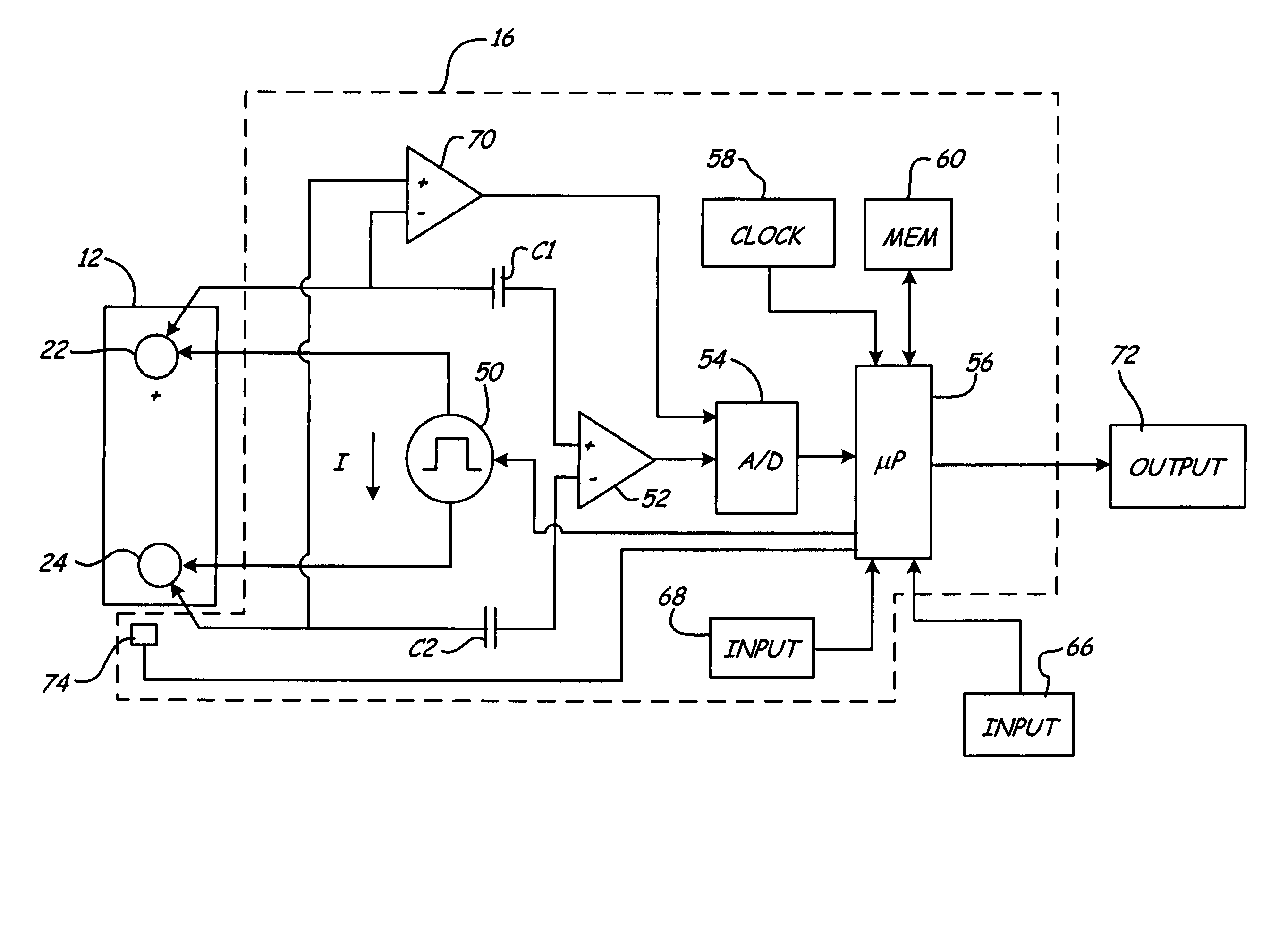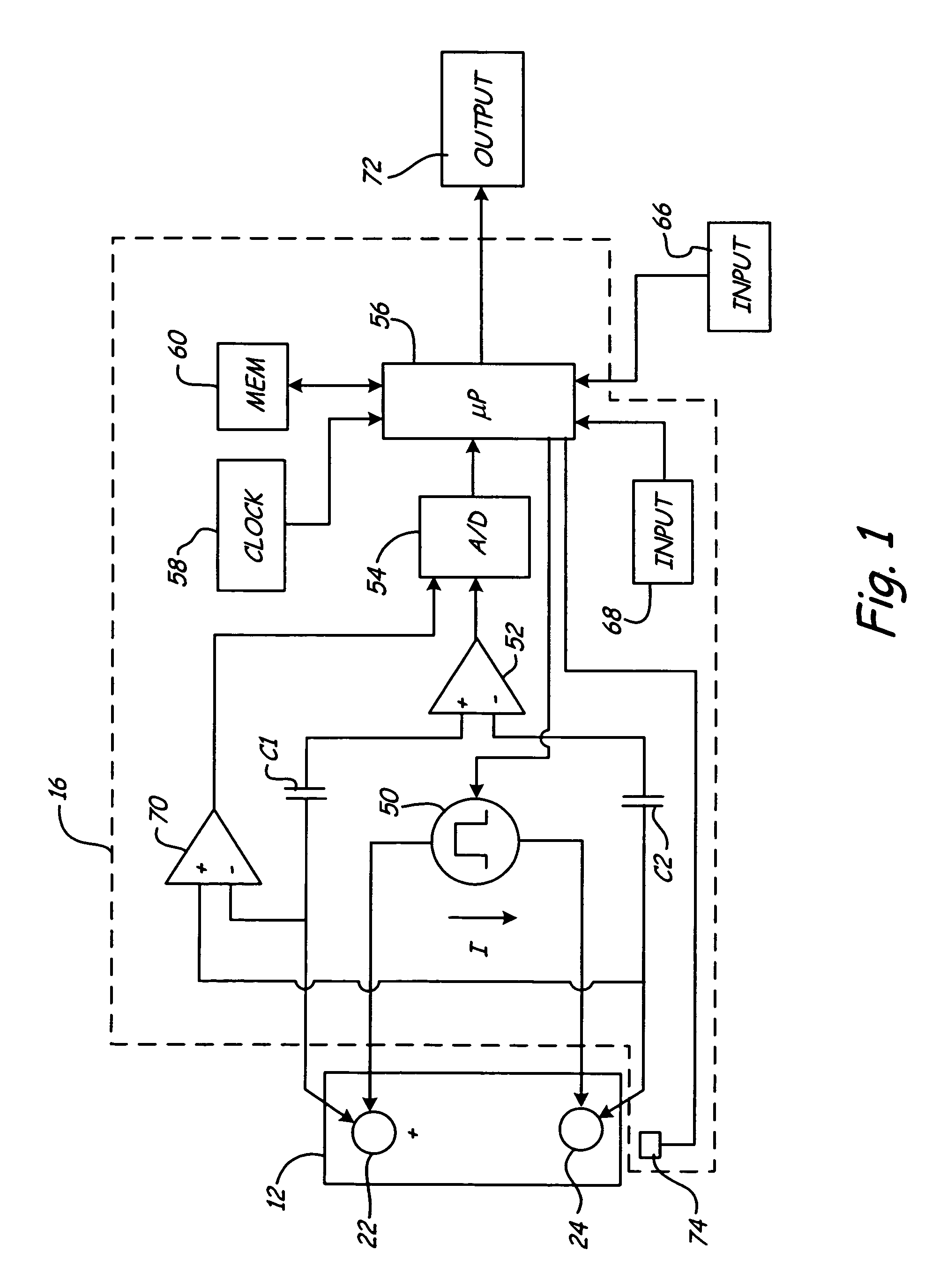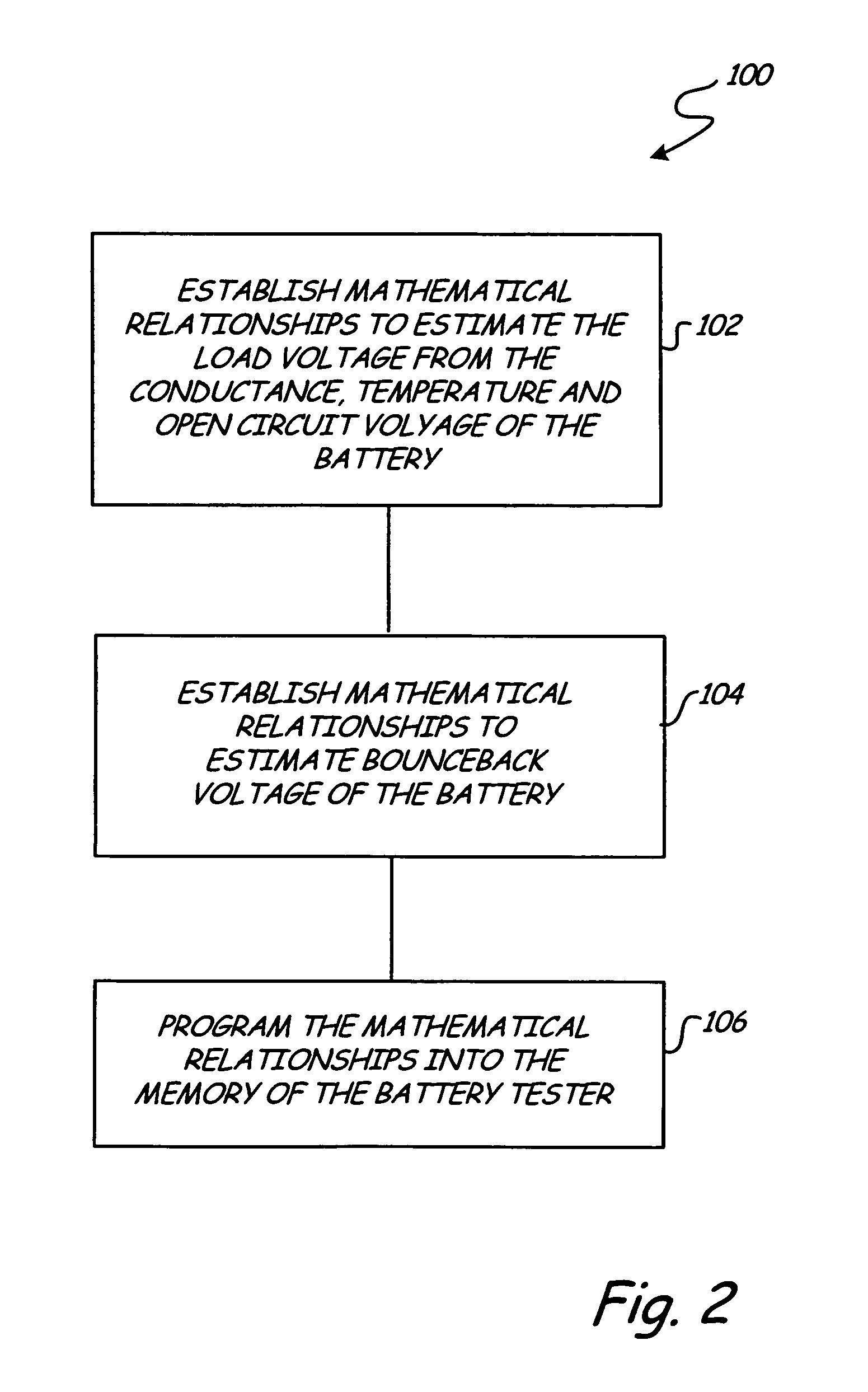Apparatus and method for simulating a battery tester with a fixed resistance load
a battery tester and fixed resistance technology, applied in the field of storage battery testing, can solve the problems of wasting battery power, affecting so as to achieve the effect of improving the accuracy of test results
- Summary
- Abstract
- Description
- Claims
- Application Information
AI Technical Summary
Benefits of technology
Problems solved by technology
Method used
Image
Examples
Embodiment Construction
[0013]The present invention provides an apparatus and method for simulating a battery tester with a fixed resistance load, such as a Japanese load tester that rates the strength of Japanese batteries that are categorized under the Japanese Industrial Standard (JIS). A battery tester of the present invention assesses a dynamic parameter, such as conductance, of a battery rated according to Japanese Industrial Standards (JIS) and, together with the resistance of the tester load to be simulated, an open circuit voltage and the temperature of the JIS rated battery, outputs calculated values that are used to rate the strength of the JIS rated battery by categories of JIS group size numbers. In addition, the tester can be used for non-JIS batteries by using reference CCA (cold cranking amps) ranges for each group size.
[0014]FIG. 1 is a simplified block diagram of battery test circuitry 16 in accordance with an embodiment of the present invention. Apparatus 16 is shown coupled to battery 1...
PUM
| Property | Measurement | Unit |
|---|---|---|
| voltage | aaaaa | aaaaa |
| load voltage | aaaaa | aaaaa |
| load voltage | aaaaa | aaaaa |
Abstract
Description
Claims
Application Information
 Login to View More
Login to View More - R&D
- Intellectual Property
- Life Sciences
- Materials
- Tech Scout
- Unparalleled Data Quality
- Higher Quality Content
- 60% Fewer Hallucinations
Browse by: Latest US Patents, China's latest patents, Technical Efficacy Thesaurus, Application Domain, Technology Topic, Popular Technical Reports.
© 2025 PatSnap. All rights reserved.Legal|Privacy policy|Modern Slavery Act Transparency Statement|Sitemap|About US| Contact US: help@patsnap.com



